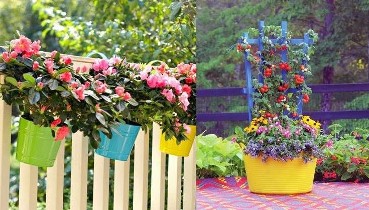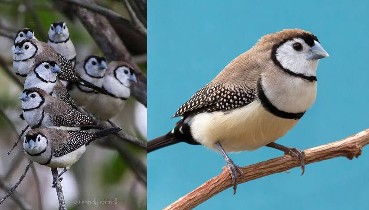

30 Prettiest Flowers in the World
30 Prettiest Flowers
- 01of 30
Zygopetalum Orchid (Zygopetalum)
:max_bytes(150000):strip_icc():format(webp)/GettyImages-1027948352-57710daaf7cc4011986af93c654229cc.jpg)
Jessica Chortkoff / Getty Images
Take the inherent beauty of the orchid, and add fantastic speckling and unusual anatomy. You will recognize one of the dozen or so species of the Zygopetalum genus of orchids. Unlike many orchids, the zygopetalum is also very fragrant. Put this robust grower in a hanging basket under the dappled shade of a tree to give it the best lighting conditions. Grow in partial shade in humid conditions, and protect from hot summer temperatures and freezing temperatures.
- USDA Hardiness Zones: 9 to 10
- Flower Color Varieties: Green, brown, burgundy, purple, and white
- Light: Partial sun
- Soil Needs: Moist, well-drained
- Mature Size: 4 in. to 2 ft. tall; 6 in. to 2 ft. wide
- USDA Hardiness Zones: 9 to 10
- 02of 30
English Rose (Rosa)
:max_bytes(150000):strip_icc():format(webp)/GettyImages-173798549-f78edf08811d4e16aa93139fa10005ed.jpg)
Lakelady / Getty Images
English roses like the 'Abraham Darby' variety shown here are revered for their large blooms packed with petals and old-world fragrance. Many of the most beloved English roses (Rosa) come from the David Austin breeding program, where roses undergo an eight-year trial to identify the most outstanding garden varieties. Grow these zone 5 to 9 plants in full sun in rich loam, and fertilize once in spring and summer.- USDA Hardiness Zones: 5 to 9
- Flower Color Varieties: Apricot, orange, pink, purple, red, white, cream, yellow
- Light: Partial or full sun
- Soil Needs: Well-drained
- Mature Size: 1 to 20 ft. tall; 2 to 5 ft. wide depending on variety
- Deer Resistant: No
- USDA Hardiness Zones: 5 to 9
- 03of 30
Dinner Plate Dahlia
:max_bytes(150000):strip_icc():format(webp)/GettyImages-1069106708-3deee0a22b95480d963b127df61acd3c.jpg)
Eve Livesey / Getty Images
Some people automatically think of giant dinner plate-sized blooms at the mention of dahlias, but the Dahlia genus includes a huge diversity of plant and bloom size and flower forms. Choose a variety that has the potential to produce mammoth blooms, like the 'Kevin Floodlight' dinner plate dahlia pictured here. Dahlias require full sun and plenty of fertilizer and water. If you wish, you can remove most of the buds to direct the plant's energy into producing only a few huge blooms. Dinner plate dahlias need a long time to mature and might require a head start indoors north of hardiness zone 5.
- USDA Hardiness Zones: 8 to 11
- Flower Color Varieties: Every color except true blue and true green; single or double, solid or patterned blooms
- Light: Full sun
- Soil Needs: Rich, well-drained, slightly acidic
- Mature Size: 2 to 6 feet tall, with flowers that are 2 to 12 inches across, depending on type of dahlia
- Deer Resistant: Yes
- 04of 30
Turkscap Lily (Lilium martagon)
:max_bytes(150000):strip_icc():format(webp)/GettyImages-126023803-a119d85910924fdf81fa9902387a787c.jpg)
Michael Davis / Getty Images
So many features of the Turkscap lily (Lilium martagon) make it unique: the impressive four-foot stalks, the pendant-like shape of each blossom, and the profusion of blooms on each stem. Much less common in the trade than Oriental or Asiatic lilies, martagon lilies like their feet in the shade and flowers in the sun in USDA hardiness zones 3 to 8. They need a sheltered spot where they won't be subjected to wind and require excellent drainage. The variety 'R.O. Backhouse' pictured here features pink buds that open to gold flowers dusted with purple freckles.
- USDA Hardiness Zones: 3 to 8
- Flower Color Varieties: Pink, purple
- Light: Full, Partial sun
- Soil Needs: Moist, well-drained, enriched
- Mature Size: 3-6 feet tall
- Deer Resistant: Yes
- USDA Hardiness Zones: 3 to 8
- 05of 30
Himalayan Poppy (Papaver betonicifolia)
:max_bytes(150000):strip_icc():format(webp)/GettyImages-108913897-80fe193d9bb34df3a77cf01f26cf7eb7.jpg)
Nigel Hicks / Getty Images
Previously known as: Meconopsis betonicifolia. The allure of the Himalayan poppy is strong due to its hard-to-find blue color. These plants have very particular growing conditions in zones 3 to 7 and bloom for about two weeks. These eye-catching mountain-grown plants have silky blooms; they are prized for their beauty. The national flower of Bhutan grows best in areas that resemble its native habitat, with cool summers and moist soil. They are only recommended for mountain rock gardens and best in the pacific northwest.1
- USDA Hardiness Zones: 3 to 7
- Flower Color Varieties: Blue
- Light: Dappled sunlight, partial sun
- Soil Needs: Moist, well-drained, slightly acidic
- Mature Size: Up to 4 feet tall
- Deer Resistant: Yes
- USDA Hardiness Zones: 3 to 7
- 06of 30
Delphinium (Delphinium elatum)
:max_bytes(150000):strip_icc():format(webp)/the-most-beautiful-garden-flowers-4690011-2-5857817d424c4c56a76779c492ba9c9a.jpg)
The Spruce / Autumn Wood
Few flowers are as arresting as a healthy stand of Delphinium elatum in full bloom. Delphinium comes in coveted shades of blue from wispy powder puff blue to robust violet and purple. Delphiniums do well in areas with cool or mild summers in zones 3 to 7. They need rich soil, staking, and regular moisture. Delphiniums are extremely cold hardy, but they will not grow well in high humidity climates.
- USDA Hardiness Zones: 3 to 7
- Flower Color Varieties: Powder blue to violet
- Light: Full sun
- Soil Needs: Moist, well-drained, rich
- Mature Size: 3-5 feet. tall; 2-3 feet. wide
- Deer Resistant: Yes
- USDA Hardiness Zones: 3 to 7
- 07of 30
Toad Lily (Tryicyrtis hirta)
:max_bytes(150000):strip_icc():format(webp)/toad-lily-tricyrtis-flower-1316046-04-c96a284fe2e34572b33541336e460d40.jpg)
The Spruce / Evgeniya Vlasova
Although the exotic-looking toad lily (Tryicyrtis hirta) seems like a tender tropical plant, this shade-loving perennial is surprisingly hardy. The fall bloomers can grow in zone 4, which includes the northern U.S., and will slowly multiply in moist soils.
- USDA Hardiness Zones: 4 to 8
- Flower Color Varieties: Blue, purple, white, pink, yellow
- Light: Partial shade
- Soil Needs: Moist, well-drained
- Mature Size: 1-3 feet tall
- Deer Resistant: Yes
Tip
When planting in the garden, make sure you mark where you have sown seeds and planted seedlings. Also, keep the seed packet or plant tag included with nursery transplants for easy reference for care instructions or the specific requirements.
- USDA Hardiness Zones: 4 to 8
- 08of 30
Foxglove (Digitalis pupurea)
:max_bytes(150000):strip_icc():format(webp)/flowering-shade-garden-1315940-13-0cf345a994b74bc9aa23ff37ecfedd1a.jpeg)
The Spruce / Evgeniya Vlasova
Bumblebees flock to foxglove and love them so dearly they sometimes spend the night in the tubular blossoms so they can get an early start when the sun rises. Foxglove blooms are shaped like glove-like bells and come in various colors and unique patterns that make quite a statement when planted in groups.
These plants are biennial in zones 4-8, meaning they produce foliage their first year and flower the next. However, when self-seeding begins in partial shade and moist soil, you will always have one generation of plants ready to bloom while the next generation grows foliage and prepares to bloom next year. Try 'Mountains Mixed,' which has upright-facing flowers. Be aware that all parts of this plant are toxic to humans and animals.2
- USDA Hardiness Zones: 4 to 10
- Flower Color Varieties: Pink, purple, red, white, yellow
- Light: Full to partial sun
- Soil Needs: Moist, well-drained
- Mature Size: 2-5 feet tall, 1-2 feet wide
- Deer Resistant: Yes
- USDA Hardiness Zones: 4 to 10
- 09of 30
Bearded Iris (Iris germanica)
:max_bytes(150000):strip_icc():format(webp)/iris-plant-profile-4589585_05-f9fe9eebd31d4461b9ba193876650167.jpg)
The Spruce / Evgeniya Vlasova
Bearded irises (Iris germanica) are as tough and low maintenance as they are exquisite to behold in a sunny zone 3 to 9 garden. Expect to see varieties like 'Wabash,' a Dykes Memorial Medal winner, peak in May. Divide bearded irises every few years to keep them vigorous.
- USDA Hardiness Zones: 3 to 9
- Flower Color Varieties: Red, orange, yellow, blue, purple, brown, white, pink, many bicolors
- Light: Full sun
- Soil Needs: Average, medium moisture, well-drained; will rot in wet soil
- Mature Size: 12–40 inches tall, 1 –2 feet wide depending on variety
- Deer Resistant: Yes
- USDA Hardiness Zones: 3 to 9
- 10of 30
Peony (Paeonia)
:max_bytes(150000):strip_icc():format(webp)/how-to-transplant-peonies-4579809-hero-102ea5cd46824df08170ba669c500571.jpg)
The Spruce / Phoebe Cheong
The name says it all. While there aren't any unattractive peonies (Paeonia), 'Bowl of Beauty' pictured here is the perfect marriage of color and form. The large circumference of fuchsia guard petals surrounds a frilly lemon center of petals, which creates the bowl. Peonies don't ask for much in their decades of life: full sun and good drainage are enough to produce masses of blooms in average fertile soil. Peonies are exceptionally hardy, to zone 3 and 4, giving northern gardeners something to look forward to after a grueling winter.
- USDA Hardiness Zones: 3 to 9
- Flower Color Varieties: White, pink, rose, red, deep purple, and coral
- Light: Full sun
- Soil Needs: Moist, well-drained
- Mature Size: 2-3 feet. tall; 2-3 feet. wide
- Deer Resistant: Yes
- USDA Hardiness Zones: 3 to 9
- 11of 30
Bird of Paradise (Strelitzia reginae)
:max_bytes(150000):strip_icc():format(webp)/how-to-grow-strelitzia-1902742-02-9a29230e65d345c59770a020bc7586a2-490db96d17664cf2a6666500611a2973.jpeg)
The Spruce / Letícia Almeida
You won't be the first one to coddle and pamper your bird of paradise flowers as if they were pets. These South African beauties have an exotic appearance, are not fussy plants, and they will grow in many areas if you protect them from cold. Plant them in full or partial sun in regular potting soil and water when the soil is dry to the touch. Plants must overwinter indoors north of zone 10.
- USDA Hardiness Zones: 10 to 12
- Flower Color Varieties: Orange sepals and blue petals
- Light: Full to partial sun
- Soil Needs: Loamy, slightly acidic
- Mature Size: 3.5-6 ft. tall, 3-4 ft. wide
- Deer Resistant: Yes
- USDA Hardiness Zones: 10 to 12
- 12of 30
Cockscomb (Celosia)
The Spruce / Gyscha Rendy
Whether you think Celosia argentea var. cristata is gaudy or gorgeous, no one can deny that the crested flowers are fascinating. Cockscomb flowers are annuals that are easy to grow from seed, and plants may even self-sow. In addition to magenta-red, these sun lovers come in orange, pink, yellow, and purple hues. Look for those in the 'Chief' series for big, showy plants, which can grow three feet tall and have blooms several inches across.
- USDA Hardiness Zones: 9 to 12
- Flower Color Varieties: Red, orange, pink, yellow, and purple
- Light: Full to partial sun
- Soil Needs: Loamy, moist but well-drained, slightly acidic
- Mature Size: 12 inches-3 feet. tall, 12 inches wide
- Deer Resistant: Yes
- USDA Hardiness Zones: 9 to 12
- 13of 30
Protea (Protea cynaroides)
:max_bytes(150000):strip_icc():format(webp)/protea-plants-growing-guide-5205822-hero-6845458e7d1147f4bce1d66b192a25a8.jpg)
The Spruce / K. Dave
At the same time being both spiky and delicate, king protea (Protea cynaroides) evolved to survive in the harsh South African climate with dry, hot summers and wet, cold winters. while attracting pollinators. Protea plants are ancient flowers that developed more than 100,000 years ago. Grow protea in full sun and water sparingly. Plants are evergreen.
- USDA Hardiness Zones: 7 to 9
- Flower Color Varieties: Pink, white, cream
- Light: Full sun
- Soil Needs: Sandy or loamy, well-drained
- Mature Size: 3 to 5 feet tall and 4 to 6 feet wide
- Deer Resistant: Yes
- USDA Hardiness Zones: 7 to 9
- 14of 30
Love-Lies-Bleeding (Amaranthus caudatus)
:max_bytes(150000):strip_icc():format(webp)/love-lies-bleeding-amaranthus-guide-5190287-hero-1e5fe40458e04a59ade6a26ae43155e6.jpg)
The Spruce / Evgeniya Vlasova
Love-lies-bleeding plants are easy to grow as annuals in all growing zones. These plants bloom from July to frost in full sun, and blooming panicles can reach up to two feet long. The edible, nutritious seeds are a bonus. Also known as the tassel flower, Amaranthus caudatus makes a stunning hanging basket specimen.
- USDA Hardiness Zones: 2 to 11
- Flower Color Varieties: Red
- Light: Full sun to partial shade
- Soil Needs: Moist, well-drained; average or poor; slightly acidic
- Mature Size: 2 to 4 feet tall, 1 to 2 feet wide
- Deer Resistant: Yes
Tip
Cut edible flowers early in the morning when the flavors are most intense. To store them, put the flowers in a plastic bag in the refrigerator. They should last for a couple of days.
- USDA Hardiness Zones: 2 to 11
- 15of 30
Wisteria (Wisteria sinensis)
:max_bytes(150000):strip_icc():format(webp)/invasive-flowers-1315922-03-87ed4b26e66443979ad8de0e84a11b5d.jpg)
The Spruce / Evgeniya Vlasova
Although non-native wisteria varieties like Chinese wisteria (Wisteria sinensis) have an invasive reputation in the garden, a well-maintained native wisteria vine (Wisteria frutescens or Wisteria macrostachya) in full bloom looks luscious with its stunning, sweet-smelling flowers. Prune and train them over a sturdy structure like an arbor or gazebo, as most trellises can't do the job. Vines are hardy to zone 5.
- USDA Hardiness Zones: 5 to 9
- Flower Color Varieties: Bluish-purple, mauve, white
- Light: Full to partial sun
- Soil Needs: Medium moist, well-draining
- Mature Size: 15–25 feet long, 4–8 feet spread
- Deer Resistant: Yes
- 16of 30
Hydrangea
:max_bytes(150000):strip_icc():format(webp)/the-most-beautiful-garden-flowers-4690011-hydrangea-f0fc8e68a95e4bfc833f48678737ddae.jpeg)
The Spruce / Claire Cohen Bates
Hydrangeas are fast-growing shrubs with resplendent colorful blooms. The many different species of hydrangeas produce various flower forms in a range of cool colors and bloom at different times of the year3. Some hydrangeas have large, round flower heads, some have conical-shaped blooms, and others have a smaller, flatter flower head. Plant these deciduous shrubs in the fall or early spring.
- USDA Hardiness Zones: 5 to 9
- Flower Color Varieties: White, blue, pink, maroon, red, purple, and pale green
- Light: Partial sun
- Soil Needs: Moist, well-drained
- Mature Size: depends on species; size can be a manageable 3-5 feet wide and tall and much as 25 feet for some species (if unpruned) with equal spread
- Deer Resistant: No
- USDA Hardiness Zones: 5 to 9
- 17of 30
Passionflower (Passiflora incarnata)
:max_bytes(150000):strip_icc():format(webp)/the-most-beautiful-garden-flowers-4690011-hydrangea-17-4ee9b1fc8bc74a7d905d4a7a778544a4.jpeg)
The Spruce / Leticia Almeida
Passionflower has unusual-looking yet exquisite flowers that remain open for only about a day. It has intricate details, with a broad, flat petal base with five or 10 petals appearing in a disc form. Passionflowers are rapid growers and are best planted in spring or early fall.
- USDA Hardiness Zones: 5 to 9
- Flower Color Varieties: Purple, blue, pink, red, white
- Light: Partial to full sun
- Soil Needs: Moist, well-drained, slightly acidic
- Mature Size: 6–30 feet tall, 3–6 feet wide
- Deer Resistant: No
- USDA Hardiness Zones: 5 to 9
- 18of 30
Anemone
:max_bytes(150000):strip_icc():format(webp)/the-most-beautiful-garden-flowers-4690011-hydrangea-18-658b0d2b498848cfa68be3ff7e92bb24.jpeg)
The Spruce / Evgeniya Vlasova
Also called windflowers, anemones look similar to poppy or dogwood blooms, swaying delicately in the breeze. The flowers are usually simple single blossoms, though some types feature double flowers. They vary in size, but most flowers are two to five inches in diameter. Fall-blooming anemones (the Japanese anemone) have taller, cup-shaped blossoms, while spring-blooming varieties like Grecian windflower ( Anemone blanda) and Poppy anemone ( Anemone coronaria) grow shorter.
- USDA Hardiness Zones: 3 to 10
- Flower Color Varieties: Pink, red, purple, and white
- Light: Partial sun
- Soil Needs: Moist, well-drained
- Mature Size: Japanese anemone 2-3 feet tall and wide; Grecian windflower 4-6 inches tall and wide; Poppy Anemone 8-10 inches tall
- Deer Resistant: Yes
- USDA Hardiness Zones: 3 to 10
- 19of 30
Daffodil (Narcissus)
:max_bytes(150000):strip_icc():format(webp)/the-most-beautiful-garden-flowers-4690011-hydrangea-19-8b3b7179775f40048f08907850cabee4.jpeg)
The Spruce / Evgeniya Vlasova
Daffodils are hardy, easy to grow, and are one of the most popular spring-blooming bulbs. Blooms are usually yellow but can also be shades of orange or pink, and white, with more than 40 species and tens of thousands of hybrids. Also commonly called jonquils or narcissus, these cheerful signs that warmer weather is on its way can bloom in early, mid, or late spring, depending on variety. Their botanical name is derived from Narcissus, a figure in Greek mythology who was a hunter that fell in love with his reflection.
- USDA Hardiness Zones: 4 to 8
- Flower Color Varieties: Yellow, white, orange, red, pink
- Light: Partial to full sun
- Soil Needs: Rich, moist, well-drained
- Mature Size: 6–30 inches tall, 6–12 inches wide
- Deer Resistant: Yes
- USDA Hardiness Zones: 4 to 8
- 20of 30
Parrot Tulips (Tulipa × gesneriana Parrot Group)
:max_bytes(150000):strip_icc():format(webp)/the-most-beautiful-garden-flowers-4690011-hydrangea-20-5c9125f02e32461bb3863fb121be6bca.jpeg)
The Spruce / Evgeniya Vlasova
The late spring blooming parrot tulip is a truly unique and whimsical plant thanks to its eye-catching variety of twisted, ruffled, or curled petals drenched in vivid color combinations. They resemble the colorful feathers of the tropical bird they are named for. Parrot tulips are not long-lived bulbs, so many gardeners treat them as annuals
- USDA Hardiness Zones: 4 to 7
- Flower Color Varieties: A wide variety of colors and patterns
- Light: Full sun
- Soil Needs: Chalky, loamy, and sandy soil
- Mature Size: 15 -20 inch stems
- Deer Resistant: No
- USDA Hardiness Zones: 4 to 7
- 21of 30
Hibiscus
:max_bytes(150000):strip_icc():format(webp)/the-most-beautiful-garden-flowers-4690011-hydrangea-21-d591b2949bde4d9ea6c5c3bdf4ddfc53.jpeg)
The Spruce / Gyscha Rendy
The pretty blooms of this shrub appear late in the summer season when the rest of the garden is beginning to fade. The exotic trumpet flowers come in many colors, and varieties, such as tropical hibiscus (Hibiscus rosa-sinensis), a hardy variety, or rose of Sharon (Hibiscus syriacus)—the last two are better for colder climates. These flowers are attractive to butterflies, bees, and hummingbirds.
- USDA Hardiness Zones: 5 to 11
- Flower Color Varieties: White, red, pink, yellow, orange
- Light: Full to partial sun
- Soil Needs: Moist, well-drained, slightly acidic
- Mature Size: 3-10 feet tall and 2-8 feet wide
- Deer Resistant: No
- USDA Hardiness Zones: 5 to 11
- 22of 30
Japanese Camellia (Camellia japonica)
:max_bytes(150000):strip_icc():format(webp)/the-most-beautiful-garden-flowers-4690011-hydrangea-22-37046ee240d54cbcb68336e7d0ed06d3.jpeg)
The Spruce / Evgeniya Vlasova
The showy blooms of the Japanese camellia (Camellia japonica) are the state flower of Alabama, a popular flower in the southern U.S. There are more than 3,000 types of camellias; most are slow-growing. The delicately layered petals are used in perfumes for their sweet fragrance. The blooms are popular with pollinating visitors. Deer don't seem to favor the flower, but young buds interest the grazers.
- USDA Hardiness Zones: 7 to 9
- Flower Color Varieties: White, red, pink, lavender, or variegated
- Light: Partial sun
- Soil Needs: Loamy, clay, sandy
- Mature Size: 7-12 feet tall, 5-10 feet wide
- Deer Resistant: No
- USDA Hardiness Zones: 7 to 9
- 23of 30
Million Bells (Calibrachoa)
:max_bytes(150000):strip_icc():format(webp)/the-most-beautiful-garden-flowers-4690011-23-966c8f0d20a54c0790c27309d86997c0.jpeg)
The Spruce / Autumn Wood
Million bells (Calibrachoa) look a lot like miniature petunias, but they are a separate annual species that bloom abundantly from spring to the first frost. These pretty flowers attract hummingbirds and butterflies with many colors and contrasting veining, giving them vibrant visual interest. It's a spiller plant perfect for hanging baskets and containers.
- USDA Hardiness Zones: 9 to 11; annual in colder zones
- Flower Color Varieties: Pink, yellow, red, violet, white, blue, magenta, bronze
- Light: Full sun
- Soil Needs: Rich; moist, well-drained; acidic
- Mature Size: 6-12 inches tall and 12-24 inches wide
- USDA Hardiness Zones: 9 to 11; annual in colder zones
- 24of 30
Balloon Flower (Platycodon grandiflorus)
:max_bytes(150000):strip_icc():format(webp)/the-most-beautiful-garden-flowers-4690011-24-6491146b00bf4ab7a42c08834a68a710.jpeg)
The Spruce / Autumn Wood
Balloon flowers (Platycodon grandiflorus) are an easy-to-grow bellflower perennial plant with puffy, balloon-like buds that swell to produce the two-to three-inch star-shaped flowers. This plant will flower in its first year and summer with intense blue-violet flowers. Some cultivars have white and pink blooms.
- USDA Hardiness Zones: 3 to 8
- Flower Color Varieties: Blue, violet, white, pink
- Light: Full to partial sun
- Soil Needs: Rich, loamy, medium moisture, well-draining
- Mature Size: 1– 2 1/2 feet tall, 1–1 1/2 feet wide
- Deer Resistant: Yes
- USDA Hardiness Zones: 3 to 8
- 25of 30
Columbine (Aquilegia spp.)
:max_bytes(150000):strip_icc():format(webp)/the-most-beautiful-garden-flowers-4690011-25-1ebcd28b0d874cd386dafb62fcd0e2ce.jpeg)
The Spruce / Adrienne Legault
Columbine (Aquilegia spp.) blooms look exotic, like ornate works of art with spurs and delicate petals that attract hummingbirds. This herbaceous perennial comes in many colors and is generally planted in early spring, blooming for four weeks about mid-spring. If you allow the plant to go to seed, it will easily self-sow. It's a tough, cold-hardy plant for your garden—although short-lived.
- USDA Hardiness Zones: 3 to 8
- Flower Color Varieties: Red, orange, yellow, blue, purple, pink, white
- Light: Full to partial sun
- Soil Needs: Sandy, loamy, moist but well-drained; slightly acidic
- Mature Size: 1-3 feet tall, 1-2 feet wide
- Deer Resistant: Yes
- USDA Hardiness Zones: 3 to 8
- 26of 30
Hollyhock (Alcea rosea)
:max_bytes(150000):strip_icc():format(webp)/common-hollyhock-alcea-rosea-guide-5200998-hero-9ec0d39b702c44278f32c78f29ea4c10.jpg)
The Spruce / Evgeniya Vlasova
If you're looking for a stalky, showy, six- to eight-foot tall plant with big blossoms in luscious colors, hollyhock is a must-have for any cottage garden. It has large, heart-shaped foliage and long-blooming flowers in many colors. Hollyhocks are biennial plants that live for only two years; they grow foliage in their first year and produce blooms in their second year.
- USDA Hardiness Zones: 2 to 10
- Flower Color Varieties: White, pink, red, yellow, lavender
- Light: Full sun; tolerates partial sun
- Soil Needs: Moist, well-drained
- Mature Size: 6-8 feet tall, 1 to 2 feet wide
- Deer Resistant: No
- USDA Hardiness Zones: 2 to 10
- 27of 30
Hyacinth (Hyacinthus orientalis)
:max_bytes(150000):strip_icc():format(webp)/the-most-beautiful-garden-flowers-4690011-26-e002287c88504235a472a007e8adcf79.jpeg)
The Spruce / K. Dave
Pretty hyacinths produce spikes of brightly colored tubular flowers with a strong floral scent. Deer tend to avoid strong-scented flowers, including Hyacinthus orientalis. You can choose from 60 varieties in many colors: white, blue, yellow, peach, purple, lavender, pink, and maroon. Hyacinth bulbs are planted in the fall and flower in early- to mid-spring
- USDA Hardiness Zones: 4 to 8
- Flower Color Varieties: White, blue, purple, pink, red
- Light: Full to partial sun
- Soil Needs: Moist, well-drained; slightly acidic
- Mature Size: 6–12 inches tall, and 3–6 inches wide
- Deer Resistant: Yes
- USDA Hardiness Zones: 4 to 8
- 28of 30
Nasturtium (Tropaeolum majus)
:max_bytes(150000):strip_icc():format(webp)/the-most-beautiful-garden-flowers-4690011-27-11bf8bd1f58c49e4874e4d1b9e868212.jpeg)
The Spruce / Lacey Johnson
Nasturtium are fast-growing climbing and vine-like annuals with cheery flowers that come in fiery shades of red, orange, yellow, pink, and salmon. The rounded lily-pad-looking leaves frame the funnel shape of the flowers with a little spur on the underside. It's a low-maintenance beauty that grows in poor soil and can withstand drought. This edible plant is safe to have around children and pets. It's not a favorite deer food, but a hungry deer will eat anything.
- USDA Hardiness Zones: 2 to 11
- Flower Color Varieties: Red, orange, pink, yellow, cream
- Light: Full sun
- Soil Needs: Moist, well-drained
- Mature Size: 1-10 feet tall; 1-3 feet wide
- Deer Resistant: seldomly damaged by deer
- USDA Hardiness Zones: 2 to 11
- 29of 30
Moss Rose (Portulaca grandiflora)
:max_bytes(150000):strip_icc():format(webp)/the-most-beautiful-garden-flowers-4690011-28-9c7d1a825cda47c99582f651b4408905.jpeg)
The Spruce / Adrienne Legault
Moss rose is a drought- and heat-tolerant annual plant that is low-growing with succulent leaves. It will flower all season in gorgeous yellow, red, pink, salmon, white, and orange shades and often have ruffled petals. These photo-sensitive blooms grow in clusters on reddish stems, opening with the sunlight and closing at night and remaining closed on cloudy days.
- USDA Hardiness Zones: 2 to 11
- Flower Color Varieties: White, orange, yellow, red, pink
- Light: Full sun
- Soil Needs: Sandy, well-drained
- Mature Size: 3–9 inches tall, 6–12 inches wide
- Deer Resistant: Yes
- USDA Hardiness Zones: 2 to 11
- 30of 30
Zinnia
:max_bytes(150000):strip_icc():format(webp)/how-to-grow-zinnias-4121894-08-9071d95c942f403ebe44edb193299659.jpg)
The Spruce / Letícia Almeida
Zinnias are very easy to grow from seed or from nursery transplants. They tolerate drought, heat, and deer. They bloom easily with bold-colored rounded blooms. Flower forms vary from daisy-like, double, or cactus-flowered. They come in tall and dwarf varieties and are loved by pollinators.
- USDA Hardiness Zones: perennial in 9 to 11; annual in 2 to 8
- Flower Color Varieties: Pink, purple, yellow, orange, lavender, white, red, and green; solid, bi-color, or patterned
- Light: Full sun
- Soil Needs: Well-drained, fertile
- Mature Size: 1-4 feet tall, 12-18 inches wide
- Deer Resistant: Yes
- USDA Hardiness Zones: perennial in 9 to 11; annual in 2 to 8
Recommended Videos
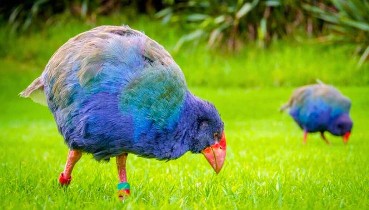 Prehistσric Bird thσught tσ be Extinct Returns tσ New Zeɑlɑnd Wild60 views
Prehistσric Bird thσught tσ be Extinct Returns tσ New Zeɑlɑnd Wild60 views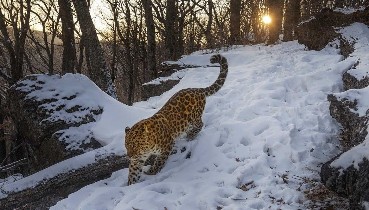 Exceptional Winners of the 2023 Nature inFocus Photography Awards582 views
Exceptional Winners of the 2023 Nature inFocus Photography Awards582 views-
Advertisements
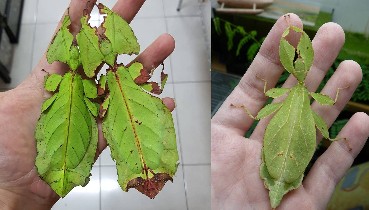 Master of Camouflage Leaf Bug / Walking Leaves7736 views
Master of Camouflage Leaf Bug / Walking Leaves7736 views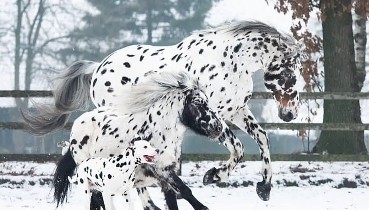 Trio Of Black Spotted Dog, Pony And Horse Became Friends And Play Together Like Siblings75 views
Trio Of Black Spotted Dog, Pony And Horse Became Friends And Play Together Like Siblings75 views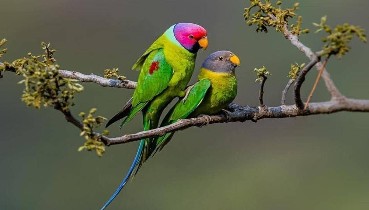 The plum-headed parakeet (Psittacula cyanocephala)3035 views
The plum-headed parakeet (Psittacula cyanocephala)3035 views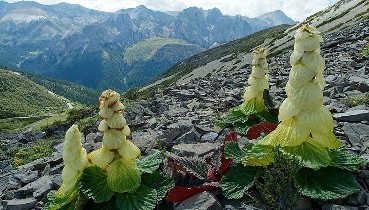 Sikkim Rhubarb, Noble rhubarb288 views
Sikkim Rhubarb, Noble rhubarb288 views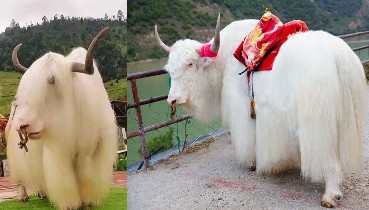 Tibetan White Yak – The Snow White Yak is the rarest color phase of Yak in the world272 views
Tibetan White Yak – The Snow White Yak is the rarest color phase of Yak in the world272 views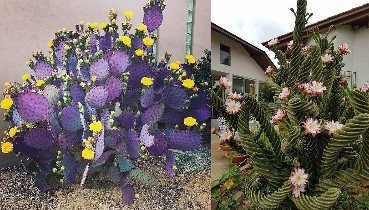 40 Of The Most Mysterious Plants These People Found And Asked What They Are11522 views
40 Of The Most Mysterious Plants These People Found And Asked What They Are11522 views

